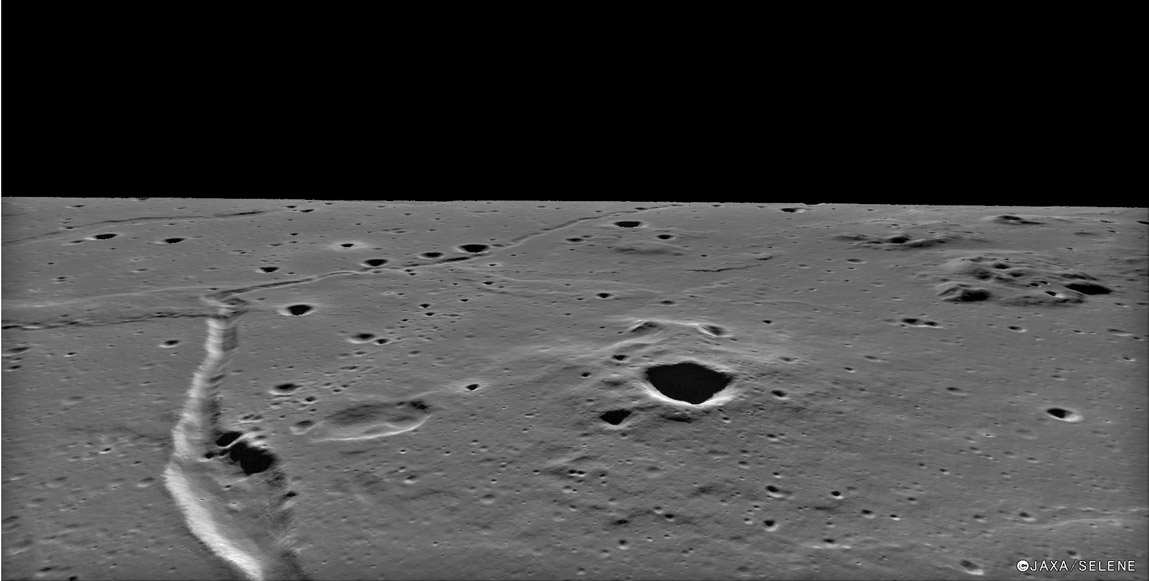November 15, 2009
Hills, Troughs And a Collapse

image from " rel="nofollow JAXA-Kaguya Image Gallery
Looking like a superb Chesley Bonestell painting, this oblique view of " rel="nofollow Marius Hills rilles is a perspective view constructed from real data. Using Terrain Camera stereo images, Kaguya scientists created a digital terrain map, and then an image was draped over it, allowing computer views from any angle. At left front is a Cobra Head-like depression that was the source vent for a barely sinuous rille that deposited the flat-lying lavas that surround the older rough domes such as the one at front right. Between the rille vent and dome is an odd gentle-sloped depression with a central hill, conceivably an impact crater overflown by lavas, but more likely a volcanic collapse crater. The shadow-filled crater near the summit of the dome appears to be an impact crater, as are most of the shadow-filled craters in the scene. At left center the rille bends sharply where it intersects a mare ridge. From this view it is possible that the ridge formed after the rille, but high resolution Orbiter V " rel="nofollow images suggests that the rille cuts the ridge. But it is hard to understand how a rille - which always flows downhill - could cut through the higher ridge, so I suppose that the ridge has uplifted the rille. I almost believe that, but I bet that the ridge was there first and it somehow diverted the flowing lava and its rille. What do you think?
" rel="nofollow Chuck Wood
Related Links
Rükl plate 29
One of the " rel="nofollow vertical view Kaguya images that the stereo map was made from.
COMMENTS?
Click on this icon File:PostIcon.jpg at the upper right to post a comment.



